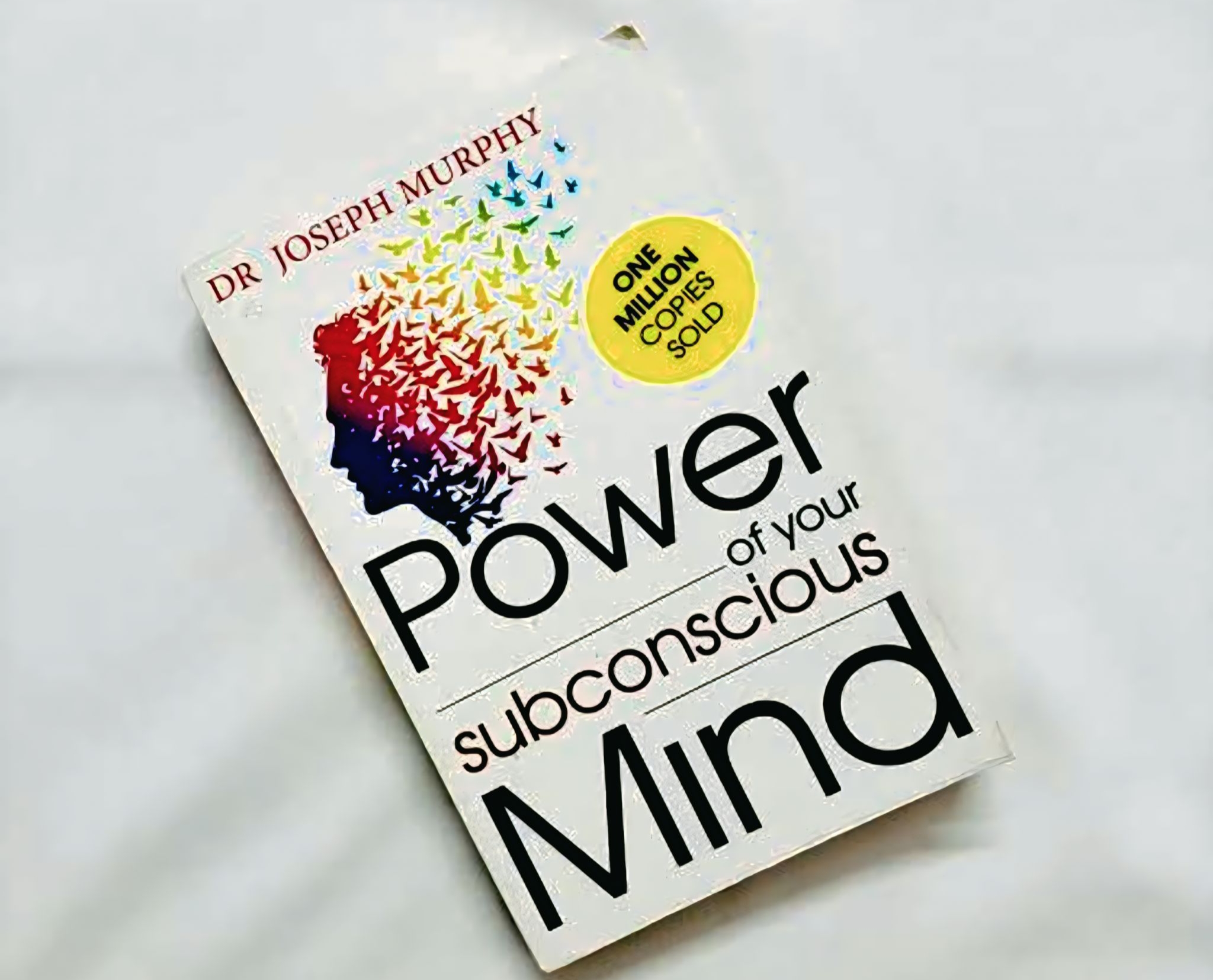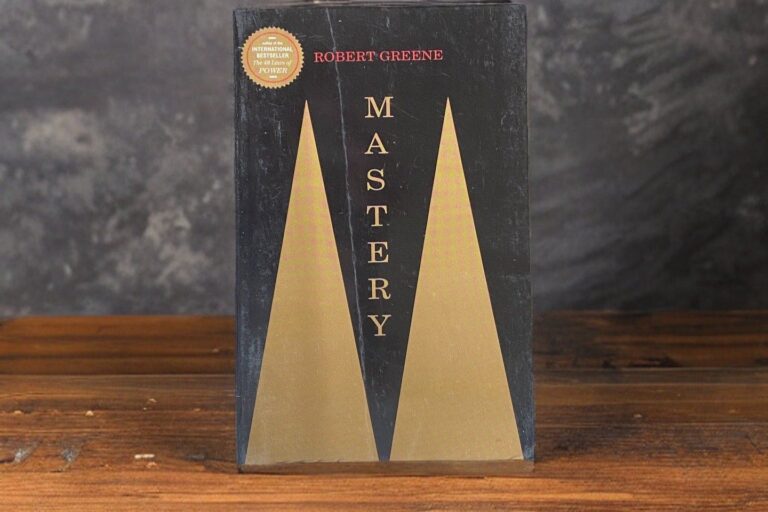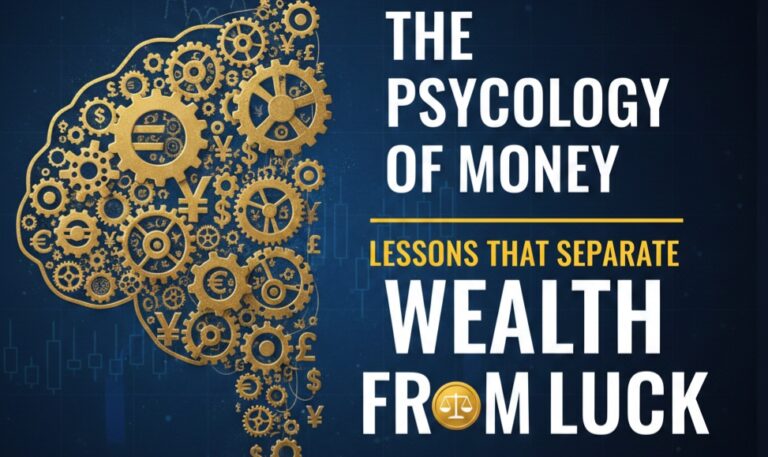
Author: Dr. Joseph Murphy
Published: 1963
Genre: Self-help, Mindset, Personal Growth
Introduction – The Silent Power Shaping Your Life
Imagine waking up on a Monday morning. You’ve got a big day ahead, but something feels… off. You didn’t consciously decide to feel anxious or unmotivated — yet here you are. You go through your day on autopilot, reacting to things instead of shaping them.
That “autopilot” isn’t magic, bad luck, or coincidence. It’s your subconscious mind — the hidden layer of your brain that works 24/7, quietly influencing your emotions, choices, and outcomes.
Dr. Joseph Murphy’s classic, The Power of Your Subconscious Mind, teaches that this hidden mental force can be your greatest ally or your biggest enemy — depending on how you use it.
Since its release in 1963, this book has sold millions of copies worldwide, translated into dozens of languages, and influenced personal growth icons, life coaches, and psychologists.
The best part? Its lessons are timeless — whether you’re chasing financial freedom, a healthier body, better relationships, or peace of mind.
About the Author – Dr. Joseph Murphy
Joseph Murphy (1898–1981) was born in Ireland, studied in India and the United States, and became a minister in the Church of Divine Science in Los Angeles. His life’s work focused on blending spiritual wisdom with modern psychology.
He was deeply influenced by:
- Eastern philosophy (Hinduism, Buddhism)
- Biblical teachings
- Psychology and the subconscious
- The New Thought movement, which emphasized the mind’s role in shaping reality
Murphy wasn’t just a preacher or an author — he was a teacher of mental tools. His philosophy was simple: “Change your thinking, and you change your life.”
What Is the Subconscious Mind?
Think of your mind as a two-level system:
- Conscious mind – The active, logical thinker. The part you use when making deliberate choices.
- Subconscious mind – The vast, quiet operator storing beliefs, habits, and memories. It controls emotions, automatic responses, and even many bodily functions.
Analogy 1 – The Garden:
Your subconscious is fertile soil. Whatever seeds you plant — good or bad — will grow. Plant fear, you’ll reap anxiety. Plant hope, you’ll reap opportunities.
Analogy 2 – The GPS:
Your conscious mind sets the destination, but your subconscious drives the car. If your “mental GPS” is programmed with fear, it will avoid risks — even ones that could help you.
Modern neuroscience supports this: habit loops, neural pathways, and the placebo effect all show how deeply our mind influences physical and emotional reality.
Chapter-by-Chapter Summary of The Power of Your Subconscious Mind
Chapter 1 – The Treasure House Within You
Murphy introduces the subconscious as an inner “treasure house” holding the keys to wealth, health, and happiness. You can tap into it through faith, visualization, and positive thinking.
Takeaway: See your subconscious as a partner, not a mystery.
Chapter 2 – How Your Own Mind Works
Your conscious mind chooses thoughts; your subconscious follows without question. Feed it negativity and it will obey — feed it hope and it will obey just as faithfully.
Takeaway: Guard your mental diet like you guard your physical one.
Chapter 3 – The Miracle-Working Power of Your Subconscious
Your mind can influence healing, opportunity, and problem-solving when you align conscious thought with subconscious belief.
Takeaway: See what you want in vivid mental pictures daily.
Chapter 4 – Mental Healing in Ancient Times
Ancient Egyptians, Greeks, and Hebrews used rituals and belief to heal. The common thread? Conviction.
Takeaway: The principle is timeless — belief activates inner change.
Chapter 5 – Mental Healing in Modern Times
Modern placebo studies confirm the mind-body connection.
Takeaway: Expectation shapes outcome.
Chapter 6 – Practical Techniques in Mental Healing
Murphy offers tools: affirmations, visualizations, gratitude, and prayer.
Takeaway: Pick one daily practice and stick to it.
Chapter 7 – The Tendency of the Subconscious Is Lifeward
Your subconscious naturally pushes toward health and growth — unless blocked by fear.
Takeaway: Release fear, and your mind will restore balance.
Chapter 8 – How to Get the Results You Want
Repetition and emotional belief impress the subconscious with new commands.
Takeaway: Consistency beats intensity.
Chapter 9 – Using the Subconscious for Wealth
Money is a mental state. If you believe you’re worthy of wealth, you’ll find opportunities.
Example: Jim Carrey visualized a $10 million paycheck long before he was famous — and achieved it.
Chapter 10 – Your Right to Be Rich
Murphy argues that wanting wealth isn’t greed — it’s natural growth.
Takeaway: Drop guilt about wanting more.
Chapter 11 – Subconscious as a Partner in Success
Great inventions, music, and solutions often come from the subconscious after deep focus.
Example: Thomas Edison “napped” with a problem in mind to spark ideas.
Chapter 12 – Scientists Use the Subconscious
Major discoveries, from Einstein to Kekulé’s benzene structure, came from subconscious insights.
Chapter 13 – The Wonders of Sleep
Sleep is prime time for subconscious programming — the mind works on problems overnight.
Chapter 14 – The Subconscious and Marital Problems
Visualize harmony, not conflict, to improve relationships.
Chapter 15 – Your Subconscious and Happiness
Happiness is a choice of focus, not a reaction to circumstances.
Chapter 16 – Harmonious Human Relations
Focusing on someone’s good qualities influences how they treat you.
Chapter 17 – Using the Subconscious for Forgiveness
Forgiveness frees you mentally and emotionally.
Chapter 18 – Removing Mental Blocks
Relaxation and letting go often open the door to solutions.
Chapter 19 – Solving Problems with the Subconscious
Plant a question before sleep; expect the answer in the morning.
Chapter 20 – Staying Young in Spirit Forever
Curiosity, learning, and gratitude keep you mentally young.
Key Lessons & Takeaways
- Your subconscious obeys — it doesn’t judge.
- Visualization is mental rehearsal — the brain treats it as reality.
- Forgiveness isn’t kindness to others — it’s freedom for yourself.
- Sleep is a golden opportunity for reprogramming your mind.
- You can “seed” your subconscious with repeated, emotionally charged thoughts.
How to Apply This Book in Daily Life
- Morning Visualization: Picture your perfect day in detail for 5 minutes.
- Bedtime Mental Movie: Imagine your goals already achieved before sleep.
- Gratitude Journaling: Write 5 things you’re grateful for every morning.
- Forgiveness Script: “I release you completely. I am free and you are free.”
Powerful Quotes from The Power of Your Subconscious Mind
- “Change your thoughts, and you change your destiny.”
- “The law of life is the law of belief.”
- “Your subconscious mind does not argue with you. It accepts what your conscious mind decrees.”
- “The feeling of wealth produces wealth; keep this in mind at all times.”
Criticism & Balanced Review
While inspiring, the book sometimes overemphasizes positive thinking without addressing external realities like economic or systemic barriers. Some stories lack scientific evidence — though modern psychology does support many core ideas.
Rating: ⭐⭐⭐⭐☆ (4/5) – Timeless, practical, but should be read with realistic expectations.
FAQ
Q: Is this book scientifically proven?
A: Some ideas are backed by psychology and neuroscience; others are more philosophical.
Q: Can it help with anxiety?
A: Yes, especially through visualization and positive affirmations.
Q: How long before I see results?
A: It depends on consistency — some see shifts in weeks, others in months.
Final Thoughts
The Power of Your Subconscious Mind is more than a self-help book — it’s a mental toolkit. If you practice even one of its methods daily, you may notice subtle but powerful changes in your thinking, emotions, and results.
As Murphy reminds us, “Change your thoughts, and you change your life.”






